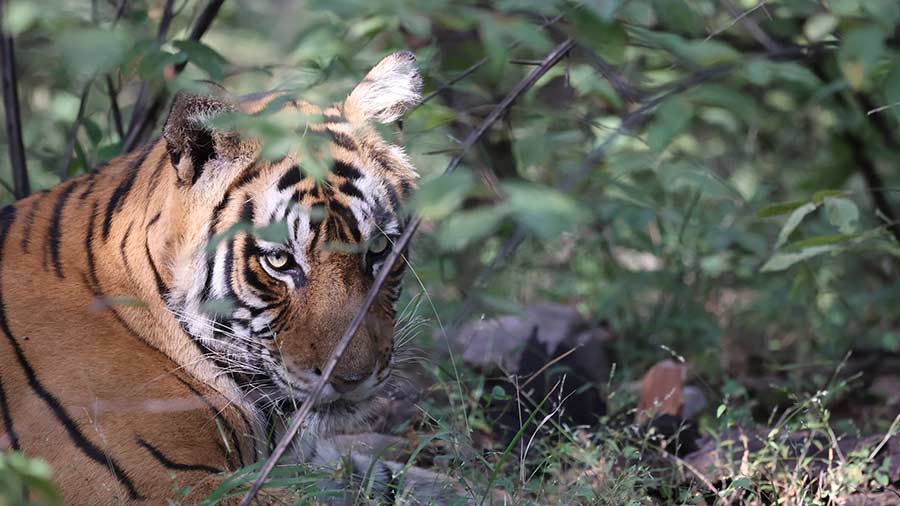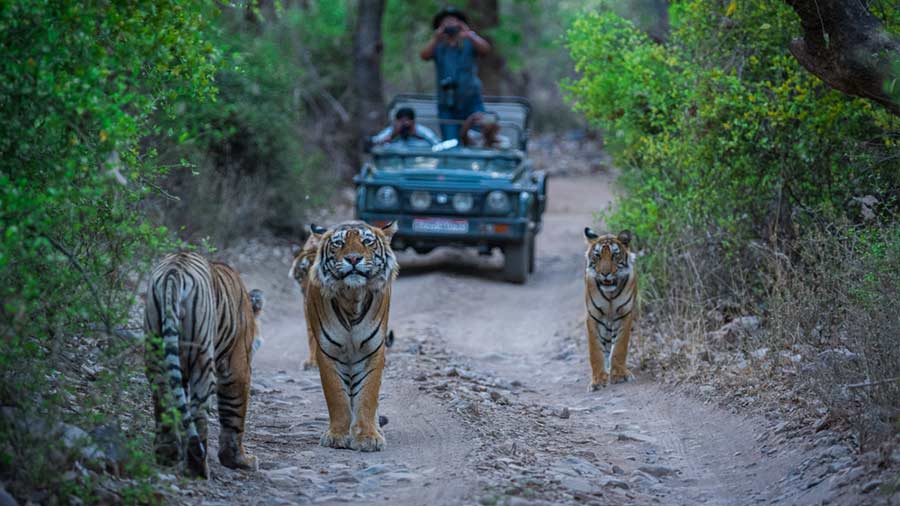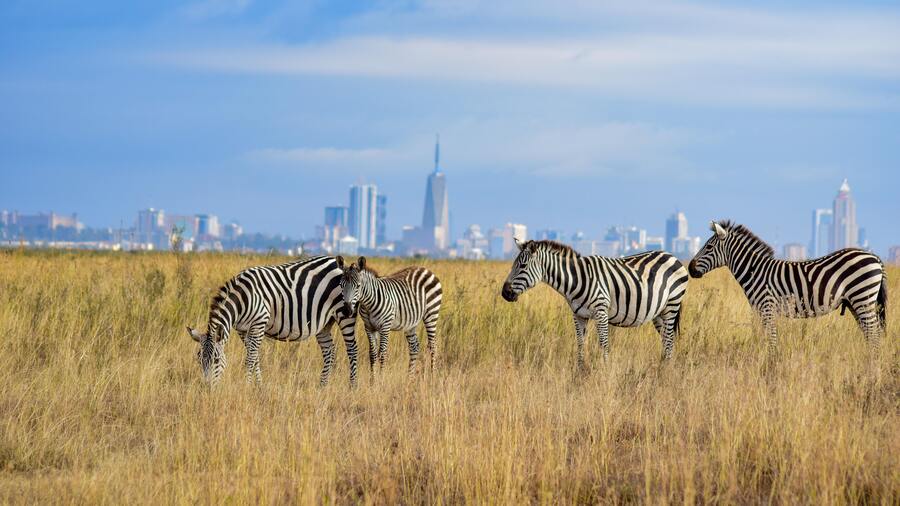Varun Dhawan recently posted on Instagram a short video showing a full-grown tigress loitering leisurely barely a few feet away from the jeep in which the Bollywood heart-throb was apparently on a jungle safari. “When the wolf (emoji) meet the tiger (emoji),” reads the caption of the Reel, which has notched up more than 9 lakh likes and counting.
The star of Varun’s Insta Reel is Riddhi (T124), the daughter of Arrowhead (T84), who occupies the best tiger habitat around the three lakes in the Ranthambore Tiger Reserve in Rajasthan. The dry deciduous and thorny forests provide a unique landscape to the Ranthambore reserve that is considered by many to be the best in India for spotting and photographing royal Bengal tigers. This abode of the big cats draws thousands of visitors every year, from commoners to celebrities to wildlife experts.

Riddhi (T124)
Manjari MaheshwariHere, as in the other reserves, the tigers are given identification numbers preceded by the letter ‘T’ in order to distinguish them from other animals. This helps in identification, tracking and to gather important data about their movement, behaviour and habitat use.
One of the young adult tigresses of Ranthambore, Riddhi is spotted mostly in zones 3 and 4, and has in the past fought with her sister Siddhi for territory several times. Another recent video clip of Riddhi had shown her mating with a young adult male tiger called Ganesh. That clip had left me surprised and worried because a few days before that Riddhi had been spotted with cubs for a few seconds. It is a traditional belief in the jungles that a tigress mating soon after delivering cubs meant the cubs had died. The same holds for other felids.

Ganesh
Manjari MaheshwariShortly before the flurry of Riddhi sightings on my mobile screen, I was lucky to see her, along with Ganesh, repeatedly in person during a visit to the Ranthambore tiger reserve, where I went on 30 safaris. I got an eyeful of other tigers also, including tigress Laila, who is not easy to spot. Tigress Shakti and her litter also made an appearance.

Laila
Manjari MaheshwariWhere Machali lived
In addition to their T numbers, tigers are given names that reflect their appearance, personality or other unique characteristics. A case in point is Machali aka T16 aka the tiger queen of Ranthambore, who was named after a fish-shaped identifying mark on her face. Believed to be the most photographed tiger in the world, Machali died in August 2016, when she was 19 years old. Most tigers live till 15 or 16. According to a National Geographic report, the reserve earned US $10 million approximately per annum from people wanting to see Machali. A decade ago, I had seen Machali a number of times. I also saw her a few months before her death.

Machali
Courtesy Ranthambore Tiger ReserveThe Ranthambore reserve initially had five safari zones, to which five zones were added later. Zones 1 to 5 are believed to be the best for spotting tigers, but Zones 6 to 10 also offer plenty of scope for tiger sighting. In the past two months, there have been many sightings in Zone 10. Each zone has unique characteristics, vantage points and is home to varied wildlife, including tigers, leopards and many types of birds. Zone 2, which abounds in waterholes, deserves special mention because of the number of sightings that are reported there.
The administration of the reserve has introduced a stringent ‘zone-permit’ rule from October 2022 that prohibits guides from reporting tiger sightings to other guides over walkie-talkie. Infractions could cost them their jobs.
Earlier, these tip-offs used to spur a rush by visitors on their vehicles across zones to the spot of the sighting. With the new rules of ‘no free zone’ and ‘no full day’ permit, the vehicles have to remain within a particular zone during a safari and cannot remain in the park for an extended period. In my experience, not only are these rules in place, but are also being stringently implemented. So do your homework on the zones before you head to Ranthambore to greatly improve your chance of seeing the majestic big cats in the wild.







